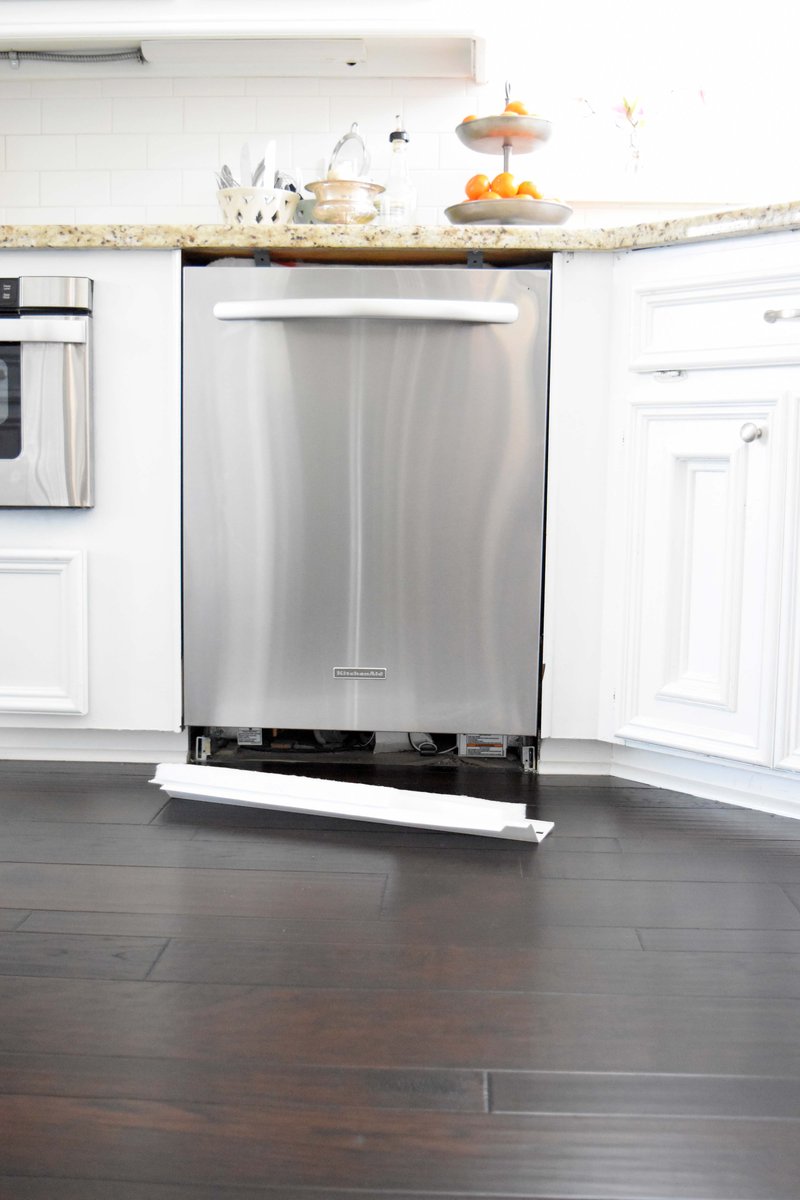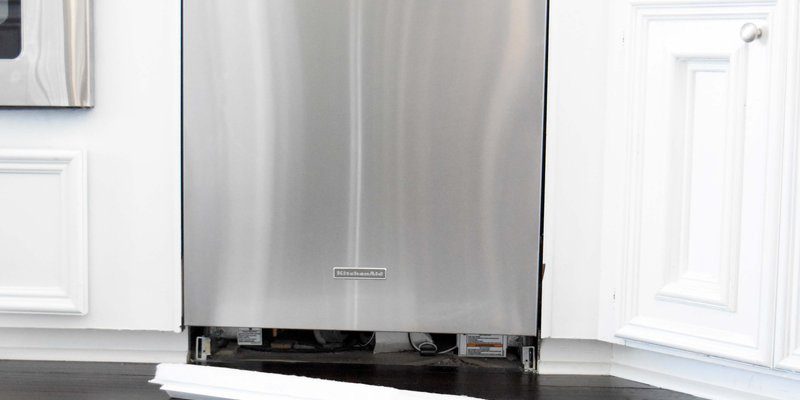
Honestly, this question pops up a lot, especially with stainless steel and painted kick plates. When you’ve just finished a deep clean and expect that satisfying shine, a dull, lackluster finish can be disappointing. Whether your appliance is a Whirlpool, GE, or LG fridge—or even a universal kick plate from the hardware store—the story is usually the same. Let’s dig into the reasons and, more importantly, what you can do about it.
What Is a Kick Plate—And Why Does It Matter?
First things first: a kick plate is that thin panel near the bottom of your fridge, dishwasher, or sometimes even interior doors. Its main job is to protect the surface from bumps, scuffs, and—you guessed it—kicks. They’re especially common on kitchen appliances like Frigidaire or GE refrigerators, where they help prevent scratches from shoes or vacuum cleaners.
Here’s the thing: because kick plates are close to the floor, they’re magnets for dust, grime, splashes, and pet hair. When you clean them, you’re often tackling months of built-up gunk. Over time, the surface can start to look dull, even after a good scrub. That dullness isn’t just cosmetic—it can make your whole appliance look older.
Some folks treat a dull kick plate like a minor nuisance, but others see it as a sign that their kitchen isn’t as clean as they’d like. Frankly, it’s a detail that even guests can notice if the sun catches it just right. So, keeping your kick plate looking bright isn’t about being fussy—it’s about preserving the look and value of your appliances.
Main Reasons Your Kick Plate Looks Dull After Cleaning
You might be wondering, “Did I do something wrong? Is it the cleaner, or the kick plate itself?” Most of the time, dullness boils down to a few common things.
- Residue from cleaning products: Some cleaners leave behind a film, especially those not meant for stainless steel or metal finishes.
- Hard water stains: Tap water can leave mineral deposits that dull the shine, especially if you let it air dry.
- Micro-scratches: Using abrasive sponges is a big culprit. Even gentle-looking pads can scratch sensitive finishes, diffusing the light and making things look cloudy.
- Old polish or wax: Leftover product buildup can cloud the surface, especially if you layer new product on top of old without removing it first.
Honestly, it’s usually a mix. For example, cleaning with a universal cleaner and a rough cloth can create tiny scratches and leave behind product residue. If your kick plate was shiny at first and now looks patchy, it might be a combo of these issues stacking up.
How Cleaning Products Affect Different Kick Plate Materials
Not all kick plates are created equal. Depending on the appliance brand (say, Whirlpool vs. Frigidaire), the material—stainless steel, painted metal, or even plastic—can affect how it reacts to different cleaners.
Stainless steel kick plates are popular because they hold up well, but they’re notorious for showing water spots and streaks after cleaning. Here’s where the type of cleaner matters most. Ammonia-based sprays or harsh chemicals can leave a cloudy residue. If you’ve noticed streaks or a persistent dullness, try switching to a stainless steel-specific polish.
Painted metal and plastic plates can look dull if you use abrasives or harsh detergents. Honestly, gentle soap and water usually work best, followed by a soft, dry towel. Strong cleaners can strip paint or leave dull, chalky marks.
And don’t forget: universal remote to cleaning products means generic isn’t always best. Sometimes, it pays to buy a cleaner that’s actually designed for your kick plate’s finish, not just what’s handy under the sink.
The Problem with Abrasive Sponges and Cloths
Let me explain why that old kitchen sponge or scrub pad is often the hidden villain. While it might feel soft in your hand, even slightly rough materials can create micro-scratches—tiny cuts too small to see, but enough to scatter light and leave the kick plate looking hazy.
The same goes for harsh scrubbing pads and, honestly, even some microfiber cloths that aren’t high quality. If you use them again and again, especially with a heavy hand, you’re slowly sanding down the surface. Over time, what started as a bright, factory-fresh shine turns into a dull, brushed-out look.
Want to avoid this? Stick to soft microfiber cloths or cleaning pads made for stainless steel. If you need to remove stubborn grime, pair a gentle cleaner with light pressure. Think of it like pairing your TV remote—you want everything in sync, not fighting against each other.
How Water and Drying Can Leave Your Kick Plate Dull
You might assume that water alone can’t hurt a kick plate, but here’s where hard water becomes a silent enemy. When you wash with tap water and let it air dry, minerals in the water can sit on the surface and create a thin, cloudy film. The result? A kick plate that looks dull no matter how hard you try.
Even if you rinse with distilled or filtered water, air drying often leaves behind faint streaks or spots. The easy fix? Always finish with a dry, soft cloth, buffing in circles. This not only removes moisture, it helps prevent mineral build-up and keeps your kick plate looking synced and shiny.
If you live in an area with especially hard water, a rinse with diluted vinegar followed by a thorough dry can help dissolve residue—just be careful with vinegar and painted surfaces, as it can strip color if left too long.
What to Do When Your Kick Plate Has Persistent Dullness
Sometimes, even after adjusting your cleaning method, the dullness sticks around. At this point, it’s about troubleshooting like you would with a remote that won’t pair: go step by step.
- Check for residue: Wipe the surface with a cloth dampened in pure water. If it feels sticky or looks streaky after drying, there’s probably leftover product.
- Try a specialty cleaner: Choose one made for your kick plate’s exact material—stainless steel, painted metal, or plastic. Follow the instructions and see if the shine returns.
- Buff with a bit of olive oil: For stainless steel, a drop of olive oil on a cloth can revive the shine and hide micro-scratches. Rub gently, then buff with a dry section.
- Consider a touch-up: If scratches are deep or the finish is badly worn, you may need to repaint or replace the plate (especially with older universal types that no longer match your appliance’s look).
The secret is patience—sometimes you have to test a few solutions to find what works for your exact kick plate.
Comparing Universal vs. Brand-Specific Kick Plates and Cleaning Methods
You might be thinking, “Is there a difference between a universal kick plate you bought at Home Depot and the type that came with your GE or LG fridge?” Here’s what I’ve seen: brand-specific kick plates usually use higher quality material, better matched to their appliances. Cleaning products made for these can help preserve the finish.
Universal kick plates, while handy and cheap, can be made from painted steel or even plastic, which react differently to cleaning. Paint can chip or fade, and plastic can get cloudy if you use the wrong detergent or scrub too hard.
When it comes to cleaning, match your cleaner (and your approach) to the material. With universal kick plates, gentle is always better. With brand-name stainless steel plates, a little extra effort—and the right polish—really pays off. Think of it like syncing a new universal remote: a bit more setup at first, but a smoother experience in the long run.
Helpful Tips to Keep Your Kick Plate Shiny
Here’s a quick list of habits that’ll help you keep your kick plate looking its best, instead of dull and disappointing.
- Clean regularly: Don’t wait for buildup. Wipe down your kick plate every time you mop or sweep, so grime doesn’t have a chance to settle in.
- Use the right products: Avoid all-purpose cleaners unless they specifically say “safe for stainless steel/metal/plastic.”
- Buff dry every time: Even after using the right cleaner, always finish with a soft, dry cloth to prevent spots and streaks.
- Avoid abrasives: No scrubbing pads, rough sponges, or steel wool—these only create more dullness and scratches in the long run.
- Try a finishing polish: If you’re dealing with stainless steel, a tiny bit of approved polish or even olive oil can restore the shine and protect against fingerprints.
Sometimes, a little extra attention makes all the difference—just like with syncing a tricky remote, that last detail is what brings everything together.
Closing Thoughts: Getting That Shine Back and Keeping It
Dealing with a dull kick plate after cleaning can be oddly annoying. The good news? It’s usually not your fault—just the wrong combo of cleaner, cloth, or technique. By matching your approach to your kick plate’s material, choosing gentle products, and drying everything thoroughly, you’ll give your kitchen that polished, cared-for look again.
Stick with it, and you’ll find that keeping your kick plate shiny is a matter of habit—not a constant struggle. The next time you finish cleaning, step back and enjoy that satisfying shine. Your kitchen—and your appliances—will look all the better for it.
